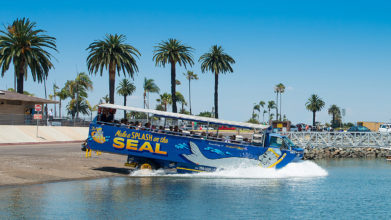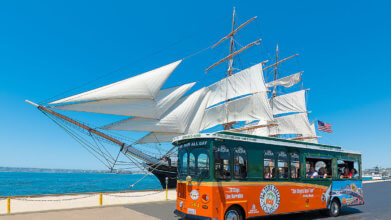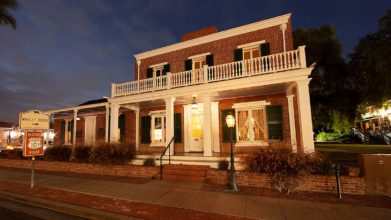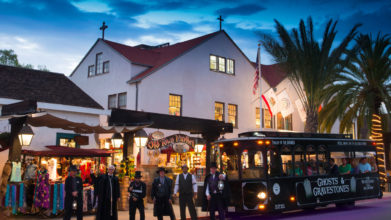La Casa de Estudillo

La Casa de Estudillo
La Casa de Estudillo was a social and political center of San Diego during California’s Mexican period, 1821-1846, and into the early American period. Capitán José Maria Estudillo, a retired San Diego Presidio comandante (fort commander), began construction of the casa (house) in 1827 on a parcel of land granted to him by Governor José Echeandí.
At first the house was an L-shaped adobe which later grew to be U-shaped. The original floors may or may not have been tile and, in the sala (living room), wood planking. At present, the roof is reconstructed of rough-cut log rafters covered by a mat of cane and fired clay tiles.The 3- to 5-foot thick walls are made of sun-baked adobe bricks built on large river cobble foundations. Upon José Maria Estudillo’s death in 1830, construction of the house continued under the direction of his son, José Antonio Estudillo, and his son’s wife, Maria Victoria Dominquez de Estudillo.
José Antonio Estudillo held many public offices in San Diego. He and other family members acquired extensive land holdings in the county, including Ranchos Temecula and San Jacinto Viejo, near Hemet and San Jacinto; Ranchos Janal and Otay, east of Chula Vista; and Rancho El Cajon. All of these properties were excellent for raising and grazing cattle.
The family descendents moved to Los Angeles in 1887 and left the house with a caretaker. Nat R. Titus bought the casa, almost in ruins, in 1906. One year later he sold it to the San Diego Electric Railway Company, owned by John D. Spreckles.
The Estudillo house was restored under the supervision of architect Hazel Waterman. In 1908, it was converted into a commercial venture called “Ramona’s Marriage Place,” based on Helen Hunt Jackson’s novel Ramona. The casa became part of the California State Park system in 1968 and was restored as a house museum identified with the Estudillo family.




